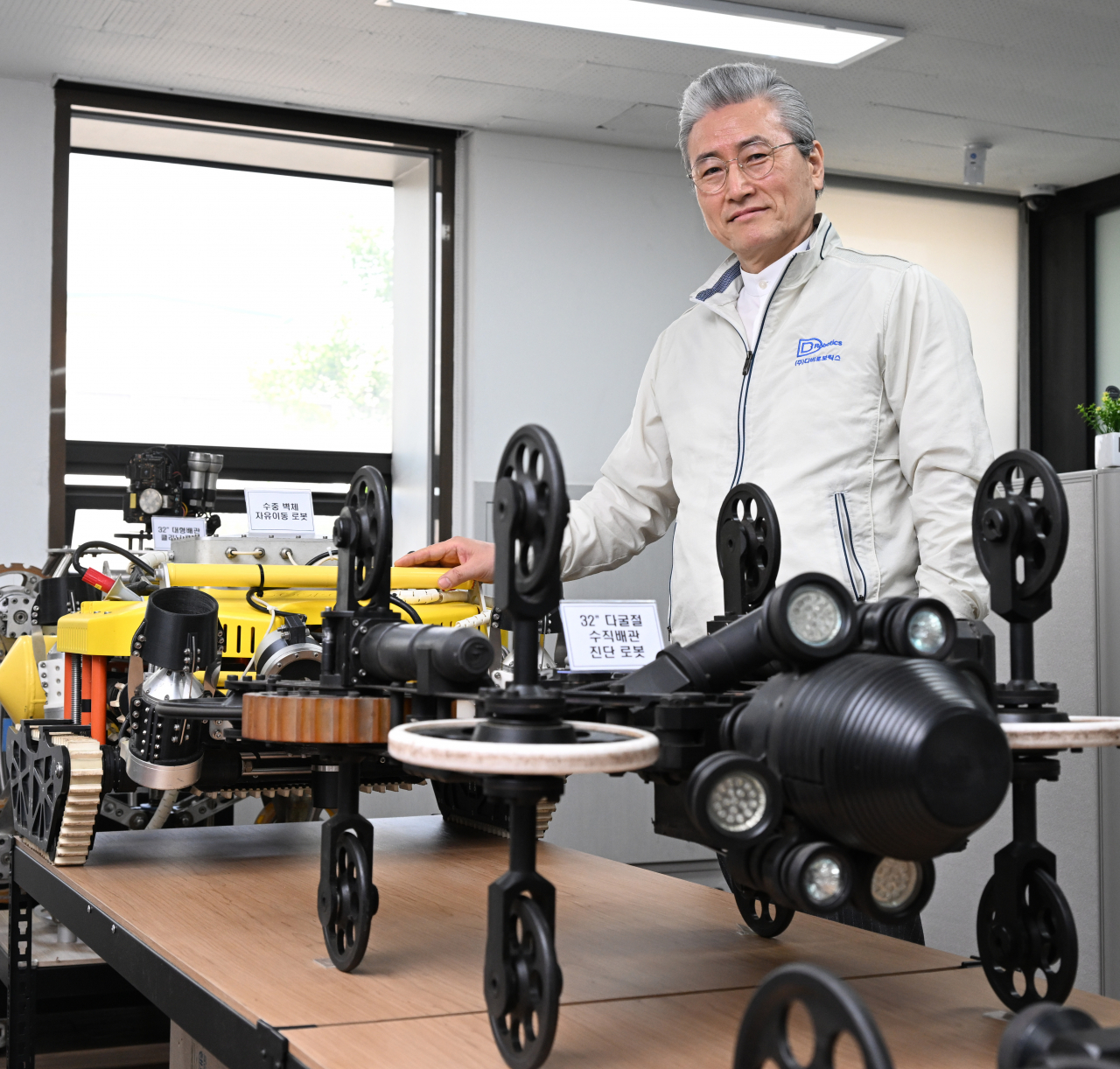 |
DB Robotics CEO Lee Bae poses for a photo before an interview with The Korea Herald held at the company headquarters in Gangdong-gu, Seoul, on May 11. (Im Se-jun/The Korea Herald) |
Amid burgeoning demand for human assistant robots, DB Robotics, a first-generation robot developer in South Korea, is receiving renewed attention for its extensive robot lineup that ranges from a gigantic deep-sea drill robot to a microsized robot traversing blood vessels.
Based on some 60 patents, the 23-year-old company has thus far developed over 300 robots, mostly for public projects. And now it aims to take a big leap by debuting its robots for commercial success, according to DB Robotics CEO Lee Bae.
“We may have jumped into the robotics business too early. From an engineer’s point of view, I had no doubt about the growth potential,” Lee told The Korea Herald in a recent interview. “Now when robots and robotics solutions are creating buzzwords, the time is ripe for us to seek commercial success at last.”
The first robot that raised the company’s profile globally was its inhalation toxicity testing robot, which played a key role in the nation’s deadly 2011 scandal involving toxic humidifier disinfectants sold by Oxy Reckitt Benckiser.
At the time, about 100 people were believed to have died from lung problems after using the product, but their bereaved families struggled to prove it.
Then, DB’s robot, equipped with a microsized drill, was mobilized for laboratory experiments to disperse the chemical evenly to mice and prove its toxicity.
“It took four months to verify the link between the toxic chemical and the deaths. Without our robot, the lawsuit raised by the victims could have dragged on for a longer time,” the CEO said, adding the robot is currently used in research work for pathogen tests at Yale University.
The company is also working on another biotech robot to get approval from the US Food and Drug Agency. The robot for a surgical catheter is designed to slip through the center of blood vessels to prevent human errors in treating chronic angiostenosis.
According to Bae, the company’s largest and most challenging robot it has built is a deep-sea drill robot 8.5 meters in height, 6 meters in width and weighing around 30 tons, which is used to analyze the thickness of a seabed area for construction of a cross-sea bridge or underwater tunnels. Currently, it is the only robot of its kind developed in Korea.
“Unlike other drill robots, our robot has joints that are strong enough to resist the deep water pressure. It can drill a hole in the exact targeted location with little margin of error,” said Lee. “Our robots could help countries like Argentina who need to construct large-scale sea bridges.”
Bae sees high potential in the robot’s wider adoption in ocean development ranging from fiber optic cables under the sea to solar panels on the ocean surface.
“Companies around the world are already spending big to rent the scarce robots in the market,” he added.
DB’s upcoming robot – the company’s first commercial robot – is a window robot that controls the windows of houses or buildings. The robot can open the window in case of a gas leak or fire, a feature especially helpful for disabled or elderly people. The window robot can also prevent “sick building syndrome,” where building occupants suffer chronic diseases, from newly built large apartment complexes or skyscrapers.
“The window itself is a robot that is powered by artificial intelligence. The sensors detect rain, noise or harmful gas emissions from cooking to control windows,” Lee said, hinting at multiple inquiries coming for collaboration from construction and interior design companies.
Despite a booming robotics market, the CEO noted that robotics engineers should be always cautious about possible risks rather than blindly competing to become the first mover in building a fancy robot.
For instance, DB started developing drones 20 years ago but its product launch had to be long delayed due to a lack of precautionary measures to regulate the brand new sector.
“Technological advancement should come with risk management,” he said, citing the company’s corporate slogan “Technology for humans.”







![[Today’s K-pop] Blackpink’s Jennie, Lisa invited to Coachella as solo acts](http://res.heraldm.com/phpwas/restmb_idxmake.php?idx=644&simg=/content/image/2024/11/21/20241121050099_0.jpg)